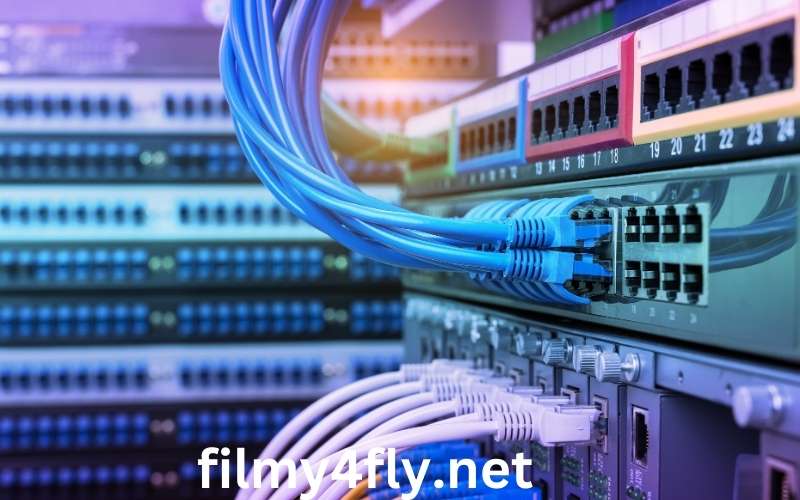Movie streaming technologies have drastically changed the way we consume entertainment. Gone are the days of renting DVDs or waiting for a scheduled TV broadcast. With the advancement of streaming technology, movies and shows are now just a few clicks away. But what exactly are these technologies, and how do they work? Let’s explore this fascinating field in detail.
Key Points to Remember:
- Streaming allows on-demand access to movies and TV shows over the internet.
- Popular streaming platforms use advanced technologies like adaptive bitrate streaming.
- Movie streaming offers convenience, flexibility, and a vast library of content for users.
What Are Movie Streaming Technologies?
Movie streaming technologies refer to the various tools and systems that enable the digital delivery of movies and TV shows to users over the internet. These technologies involve several components, such as encoding, compression, delivery networks, and playback software, which work together to ensure smooth, high-quality viewing experiences. The core idea behind streaming is that content is sent in small packets of data, which are immediately played on the user’s device without requiring the full file to be downloaded beforehand.
These technologies began with simple video-on-demand (VOD) systems, but over time they have evolved with the rise of high-speed internet, cloud computing, and powerful mobile devices. Now, streaming platforms like Netflix, Amazon Prime, Disney+, and Hulu deliver high-definition (HD), 4K, and even 8K content, all with minimal buffering and interruption.
How Does Movie Streaming Technology Work?
The functioning of movie streaming technology can be broken down into a few simple steps:
- Content Encoding and Compression: Movies are encoded into a digital format, compressed to reduce file size, and then uploaded to streaming servers. This ensures that content is delivered quickly without wasting bandwidth.
- Adaptive Bitrate Streaming: This technology adjusts the quality of the video based on the user’s internet connection. If the internet speed is high, the video will stream in high quality. If the connection is slow, it will adjust to a lower resolution, preventing buffering.
- Delivery Networks: Streaming services rely on Content Delivery Networks (CDNs) to distribute content globally. These networks store copies of movies in servers closer to users, ensuring faster load times and reduced latency.
- Playback and Devices: After the content is delivered to the user’s device (smartphone, tablet, TV, computer), it is decoded and displayed. The compatibility of streaming with various devices is a crucial part of its success.
What Are the Different Types of Movie Streaming Technologies?
There are several types of movie streaming technologies in use today. Each type caters to specific needs and offers varying benefits for both service providers and viewers. The main types include:
1. Video-On-Demand (VOD) Streaming
VOD streaming is the most common form of movie streaming technology, allowing users to select and watch movies or TV shows at any time. Platforms like Netflix and Hulu use this method to deliver a wide array of content, allowing users to binge-watch entire seasons or pick individual episodes.
Example:
A user can watch “The Crown” on Netflix anytime after signing in, without needing to wait for a scheduled broadcast or downloading the entire series in advance.
2. Live Streaming
Live streaming is used for events or broadcasts that are happening in real-time. This is common for sports, news, or special events like award shows. Streaming platforms that offer live streaming include YouTube, Facebook Live, and sports-specific platforms like ESPN+.
Example:
An NBA game being streamed live on ESPN allows viewers to watch the event in real-time, as it happens.
3. Adaptive Streaming
This technology adjusts the quality of the stream based on the user’s available bandwidth. For example, if a user’s internet connection slows down, the quality of the video will automatically decrease to prevent buffering. This ensures a smooth viewing experience, regardless of internet speed.
Example:
If a user is watching a 4K movie on Netflix but their internet speed decreases, Netflix will automatically adjust the stream to 1080p or 720p to prevent interruptions.
How Do Streaming Platforms Ensure High-Quality Viewing?
Streaming platforms invest heavily in ensuring their content reaches viewers in the highest quality possible. To achieve this, they use a combination of technologies and infrastructure to maintain the quality of streams under different network conditions. Here are the main strategies:
1. High-Definition and Ultra High-Definition Content
Most streaming platforms offer content in HD (1080p), 4K, and even 8K. However, streaming these high-quality formats requires a fast internet connection. With advances in technology, platforms can now compress video files without losing too much quality, allowing for ultra-high-definition streaming even on lower-speed internet connections.
2. Compression Techniques
Compression reduces the file size of video content without compromising too much on quality. Two of the most common compression formats are H.264 and H.265. These formats ensure that streaming can happen quickly and with minimal buffering. Compression makes sure users can enjoy high-quality content without needing vast amounts of data.
3. Cloud-Based Infrastructure
With cloud computing, streaming services can host large amounts of data and manage content distribution more efficiently. Cloud-based infrastructure allows companies like Netflix and Amazon to deliver content from servers across the globe, ensuring that viewers have faster access to their favorite movies and shows no matter where they are.
Advantages and Disadvantages of Movie Streaming Technologies
Advantages:
- Convenience: Movies and shows can be watched at any time from virtually any device with an internet connection.
- Global Access: Streaming services make it possible for people worldwide to access content that may not be available through traditional media channels.
- Cost-Effective: Streaming services are often more affordable than cable TV or purchasing movies individually.
Disadvantages:
- Internet Dependency: High-quality streaming requires a stable internet connection. Poor internet can result in buffering or lower-quality streams.
- Subscription Costs: While streaming services are cheaper than traditional media, the costs can add up when subscribing to multiple platforms.
- Limited Content: Not all movies or TV shows are available on every streaming platform, which can frustrate users.
Conclusion About Movie streaming technologies
Movie streaming technologies have revolutionized the entertainment industry by offering greater convenience and variety. With advancements in adaptive streaming, high-definition content, and cloud infrastructure, users can now enjoy seamless access to their favorite movies and TV shows on-demand. However, like any technology, it comes with its set of challenges, such as the need for a stable internet connection and the cost of multiple subscriptions. Nonetheless, the continued development of streaming technologies ensures that the future of entertainment will only get better.
FAQ’s
- What is the difference between VOD and live streaming?
VOD allows users to watch content at their convenience, while live streaming broadcasts events in real-time. - How does adaptive streaming work?
Adaptive streaming adjusts the quality of video streams based on the user’s internet speed to avoid buffering. - Do all streaming platforms offer 4K content?
No, not all platforms offer 4K content. It depends on the platform and the user’s subscription plan. - Is movie streaming cheaper than traditional cable?
Yes, streaming services are generally more affordable than cable TV, though multiple subscriptions can add up. - Can movie streaming be done without an internet connection?
Some platforms allow downloading content for offline viewing, but streaming itself requires an internet connection.




